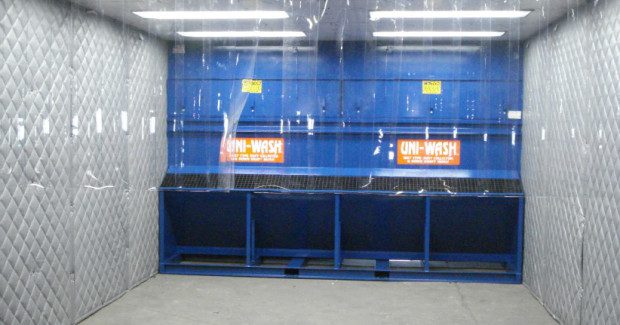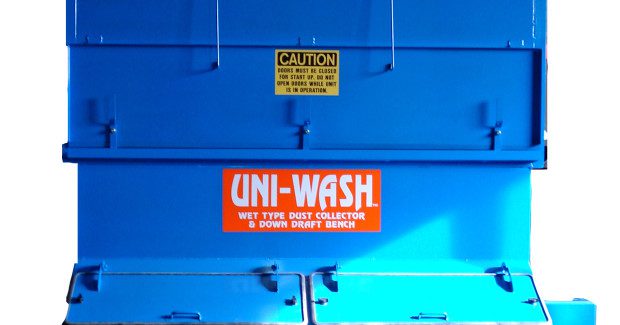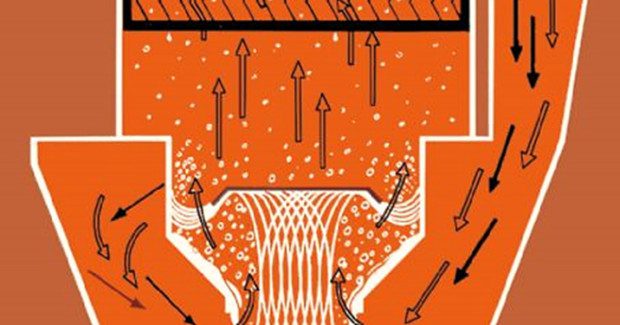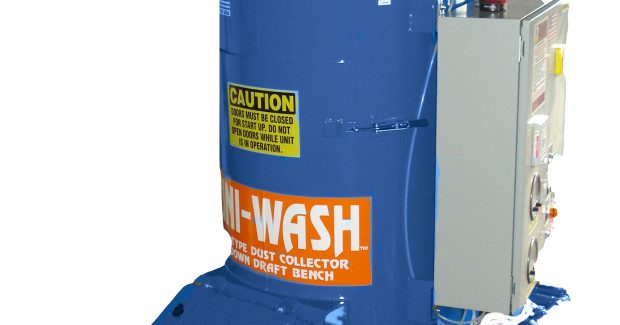The Need to Scrub
As the use of aluminum, titanium and other exotic materials increases in everything from aerospace components to golf clubs, metal fabrication processes are creating more combustible dust than ever before that must somehow be rendered inert.
Posted: August 3, 2015
The Wet-Type dust collection market has been steadily growing over the past ten years for several reasons. The awareness of NFPA Guidelines by job shops, contract manufacturers and metal service centers has increased over this time period and they now realize that wet-type dust collection is a worthy and often necessary investment for their operation. The risk of a fire and the consequences which include significant production down time, employee injury or even death makes wet-type dust collection necessary in certain applications.
NFPA 484 is the Standard for Combustible Metals. This standard applies to the production, processing, finishing, handling, recycling, storage, and use of all metals and alloys that are in a form that is capable of combustion or explosion, as well as to operations where metal or metal alloys are subjected to processing or finishing operations that produce combustible powder or dust. [1] If your process involves aluminum, titanium, magnesium, zirconium, tantalum, and/or niobium, NFPA 484 pertains to you. In most instances a wet type dust collection system is preferred for rendering these combustible materials inert. There are no expensive filters to replace, no chemical isolation systems to re-charge. While dry filtration systems become less effective as their filters load with dust, orifice impingement wet systems do not.
The cost of outfitting dry filtration systems with appropriate passive and active controls to comply with NFPA requirements has become prohibitively expensive. Passive controls involve special explosion vents and ducting to control pressure and to direct and extinguish flames. Active controls involve pressure/flame detection, and chemical isolation and extinguishing systems. These systems need to be regularly checked and re-charged, adding further to the cost of a dry filtration system. Wet collectors simply do not require these systems because the combustion hazard is removed immediately when the process material enters the water scrub.
There are two main types of wet-type dust collectors. The orifice / impingement design and the internal / venturi design. The O/I design utilizes a large cone-shaped orifice and an impingement plate that resides inside and on top of the cone. This creates an extremely efficient “scrub.” The scrub is where the dust entering the collector is mixed with water and sinks to the bottom of the collector and is the most important part of removing particulate. The process works best when the water surface to air ratio is highest within the scrub, thus making the most water to particulate contact. The O/I design does this most efficiently by removing 95 percent particulate down to 3 micron with just 3 in wg of pressure drop. Additionally, by utilizing a wide opening in the cone, the O/I design will never clog.
A contributing factor for the increasing demand of wet-type dust collection is the increased use of materials suited for wet-type dust collection in products being manufactured. Aluminum and titanium are the two most common metals where processes that create dust need to be rendered inert in a wet-type collection system. From aerospace to golf clubs, these metals are turning up in our products more often.
Other emerging markets for wet collection include food processing and pharmaceutical industries. Wet dust collection systems are used very effectively when process dust is water soluble and biodegradable. The wet system effectively captures dust where it is thoroughly scrubbed out of the air, dissolves, then simply drains away. There is no combustion hazard. There no exposure to workers by contaminated filters and little down time wasted by filter changes. Processing this way is less expensive and reduces a shop’s environmental impact by avoiding costly trips to the land-fill with dirty filters. We have seen a move in this direction just in the past year. More and more manufacturers are beginning to see that these simple advantages add up to significant savings and public relations advantages over time.
Currently, about half of the wet-type dust collectors we manufacture are stainless steel. Companies in the food processing industry are finding uses for wet-type dust collection and require the sanitary benefits of stainless steel for their applications. Stainless steel also increases the life of the dust collector approximately 70 percent, making it an attractive option for those that are willing to spend a little more money now and reap the benefits later.
Looking forward, companies are increasingly utilizing wet-type dust collection for unique applications that we, as a manufacturer, never considered. One plant recently had a process that created dust with a sticky residue. They were constantly replacing cartridge filters in their very large dry collection system. The ductwork required frequent cleaning and production needed to be halted during these maintenance operations. The process dust tested to be soluble and biodegradable and they are in the process of replacing a large dry cartridge dust collection system with a wet-type dust collection system. This solution will save them hundreds of thousands of dollars in maintenance and production down-time in the coming years.
Wet-type dust collectors have been around since the late 1930s, but with today’s highly technical processes and materials, the benefits of wet-type dust collection are just now beginning to be realized. Configurations such as piped systems, booth systems and down draft bench systems have allowed wet-type dust collection to be available for a wide range of processes. These, together with the small footprint requirements, elimination of expensive ductwork and low maintenance requirements, will continue to make wet-type dust collection more popular than ever in the coming years.
[1] For more information, please click here.















